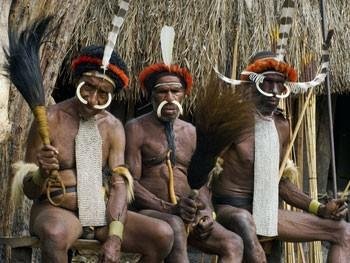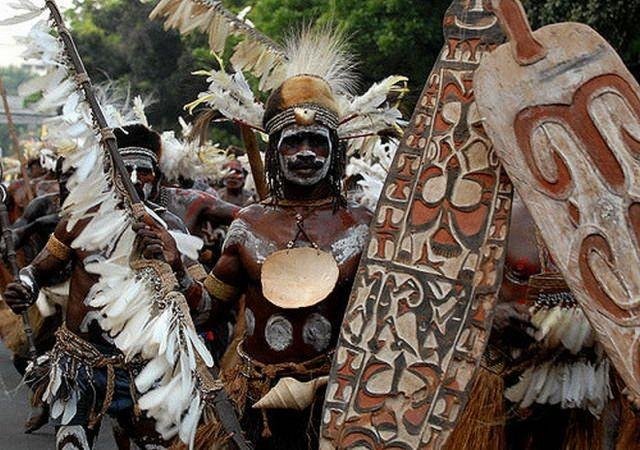
Asmat is a tribe in Papua. Asmat tribe known for its unique wood carving. The Asmat population is divided into two groups: those living on the coast and those living in the interior. These two populations differ from one another in terms of dialect, way of life, social structure and ritual. The coastal population is further divided into two parts: the Bisman tribe that lies between the Sinesty river and the Nin river and the Simai tribe.

Asmat tribe itself is actually divided into two, namely tribes who live on the coast and Asmat tribe who live in the interior. Patterns of life, way of thinking, social structure and daily life of these two categories of Asmat are very different. For example, in terms of their livelihoods, for example, the Asmat tribe who live in rural areas, usually have jobs as hunters and farmers, while those who live on the coast prefer to be fishermen as livelihoods. The differences between the two populations are also due to the conditions of the region in which they live and the immense influence of immigrant communities that are generally more open than the Asmat culture itself.

The Asti Istiadat Tribe Asmat
Like society in general, in carrying out its life process, Asmat people also have special ritual or event, that is as follows:
Pregnancy during this process, the next generation will be safely guarded so that they can be born safely with the help of the biological mother or mother-in-law.
Birth Not long after the birth of the baby was performed simple ceremony with the cutting of the umbilical cord that uses Sembilu, a tool made of bamboo that is dilanjarkan. Furthermore, breastfed until the age of 2 years or 3 years.
Marriage The marriage applies to Asmat tribe who is 17 years old and done by the man's parents after both parties reached agreement and through the test of courage to buy the woman with the dowry of antique dishes based on the value of money of Johnson boat ship agreement, if there is a deficiency in interpretation of Johnson's boat price, then the men must pay it off and during the repayment period the man is prohibited from carrying out acts of persecution even though it is allowed to live in one roof.
Death When a tribal chief or customary chief dies, the remains are mummified and displayed in front of this tribe's joglo, but if the general public, his body is buried. This process is carried out with the accompaniment of Asmat's singing and cutting of the finger joints of abandoned family members.
good luck
by @dalll
Hi! I am a robot. I just upvoted you! I found similar content that readers might be interested in:
https://factsofindonesia.com/asmat-tribe-culture